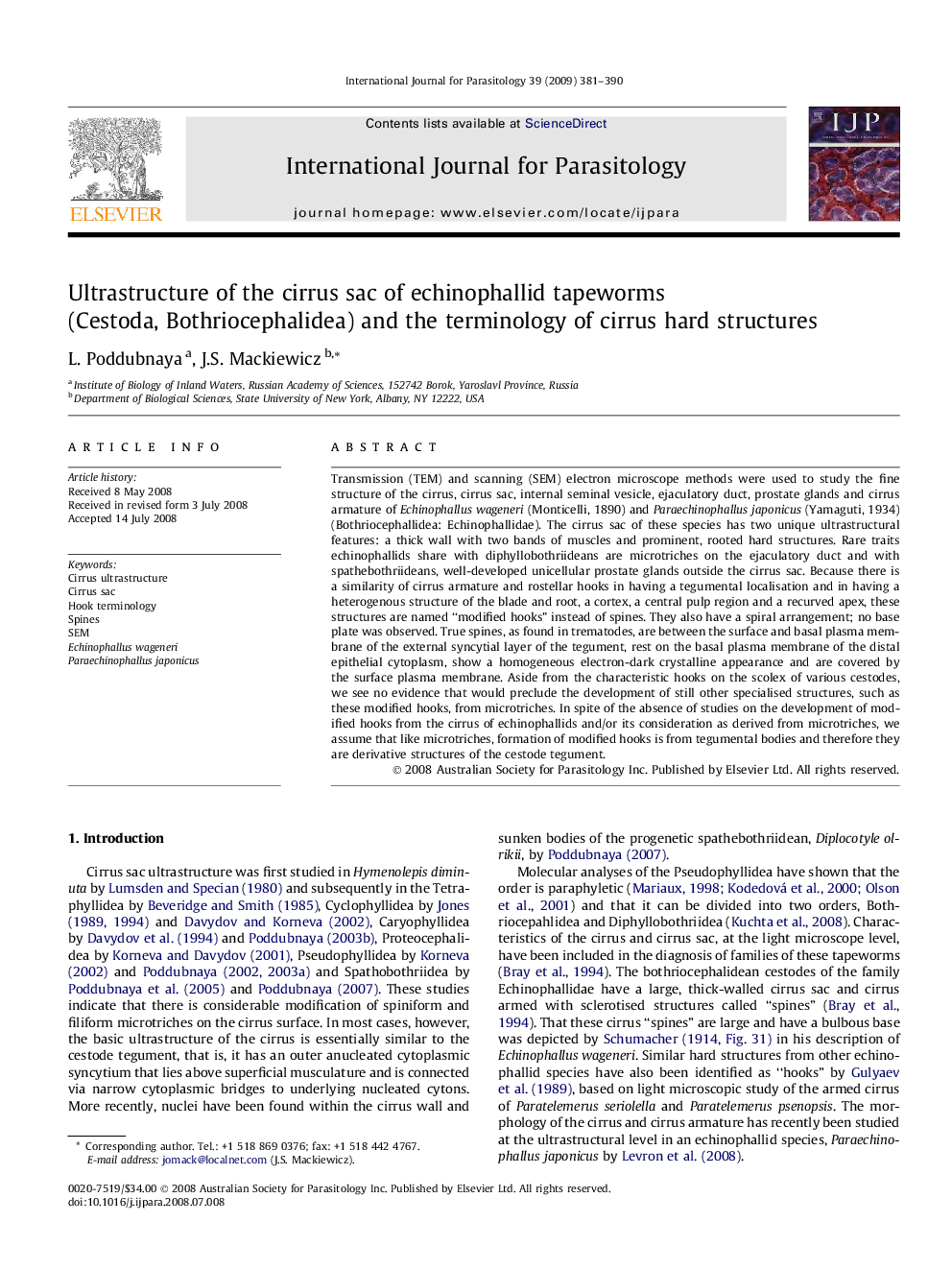| کد مقاله | کد نشریه | سال انتشار | مقاله انگلیسی | نسخه تمام متن |
|---|---|---|---|---|
| 2436635 | 1107330 | 2009 | 10 صفحه PDF | دانلود رایگان |
عنوان انگلیسی مقاله ISI
Ultrastructure of the cirrus sac of echinophallid tapeworms (Cestoda, Bothriocephalidea) and the terminology of cirrus hard structures
دانلود مقاله + سفارش ترجمه
دانلود مقاله ISI انگلیسی
رایگان برای ایرانیان
موضوعات مرتبط
علوم زیستی و بیوفناوری
ایمنی شناسی و میکروب شناسی
انگل شناسی
پیش نمایش صفحه اول مقاله

چکیده انگلیسی
Transmission (TEM) and scanning (SEM) electron microscope methods were used to study the fine structure of the cirrus, cirrus sac, internal seminal vesicle, ejaculatory duct, prostate glands and cirrus armature of Echinophallus wageneri (Monticelli, 1890) and Paraechinophallus japonicus (Yamaguti, 1934) (Bothriocephallidea: Echinophallidae). The cirrus sac of these species has two unique ultrastructural features: a thick wall with two bands of muscles and prominent, rooted hard structures. Rare traits echinophallids share with diphyllobothriideans are microtriches on the ejaculatory duct and with spathebothriideans, well-developed unicellular prostate glands outside the cirrus sac. Because there is a similarity of cirrus armature and rostellar hooks in having a tegumental localisation and in having a heterogenous structure of the blade and root, a cortex, a central pulp region and a recurved apex, these structures are named “modified hooks” instead of spines. They also have a spiral arrangement; no base plate was observed. True spines, as found in trematodes, are between the surface and basal plasma membrane of the external syncytial layer of the tegument, rest on the basal plasma membrane of the distal epithelial cytoplasm, show a homogeneous electron-dark crystalline appearance and are covered by the surface plasma membrane. Aside from the characteristic hooks on the scolex of various cestodes, we see no evidence that would preclude the development of still other specialised structures, such as these modified hooks, from microtriches. In spite of the absence of studies on the development of modified hooks from the cirrus of echinophallids and/or its consideration as derived from microtriches, we assume that like microtriches, formation of modified hooks is from tegumental bodies and therefore they are derivative structures of the cestode tegument.
ناشر
Database: Elsevier - ScienceDirect (ساینس دایرکت)
Journal: International Journal for Parasitology - Volume 39, Issue 3, February 2009, Pages 381-390
Journal: International Journal for Parasitology - Volume 39, Issue 3, February 2009, Pages 381-390
نویسندگان
L. Poddubnaya, J.S. Mackiewicz,